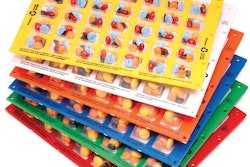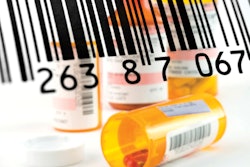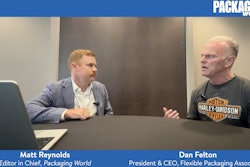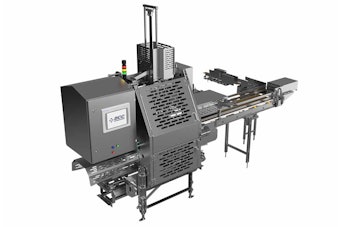Packaging is no exception. Digital media has enabled new ways to engage and energize shoppers and consumers with brands.
Digital package printing is, by definition, a disruptive innovation. Digital technologies have steadily evolved during the past decade, especially in the narrow-web label market. It is conceivable that during the upcoming Drupa 2012 show we are likely to see the next step-change in format and speed. As digital printing technologies continue to grow in capability, so too does the intersection of what’s needed and what’s possible.
Acceleration to digital printing has started with labels and shrink sleeves. Blister cards, small cartons, and film bags also are digitally printed. Larger press formats, to serve more of the flexible film and folding carton industries, are likely to be announced at Drupa 2012.
A number of consumer packaged goods companies that have become early adopters of digital printing are fully leveraging its potential. A successful marketing strategy will focus on the three Es: energizing consumers, enhancing brand image, and executing responsibly.
Digital printing will contribute to all three points of this model. Hobby Lobby grew candle sales by 3% with seasonal introductions, while L’Oreal introduced a line of kids shampoo using Toy Story III with digitally printed shrink sleeves. The Coca-Cola Co. held an online design contest for its Sprite brand in Israel. There were 3.5 million visitors to the campaign Web site, and this is half the country’s population. Some 20,000 cans were digitally printed with 400 different designs. Heineken introduced a loyalty program online, allowing consumers to personalize their beer bottles. The program that started as a pilot in Holland in 2009 expanded to Ireland and Spain in 2011. Heineken plans to expand the program to four more countries in 2011.
Primed for a huge growth spurt
Several forces are coming together to create the “perfect storm” that will accelerate the use of digital package printing. First, CPG companies need to reignite sales growth. During the past 18 months, we’ve seen a number of new business approaches that have fully leveraged digital technologies to engage consumers. Second, product customization continues to accelerate SKU proliferation. Three years ago, the average U.S. supermarket contained 33,000 SKUs. Today, there are 38,000 SKUs. Third, “green” is becoming normal. Several years ago, Walmart issued a sustainability scorecard to CPG companies. Now we are seeing CPG companies bringing Walmart’s sustainability programs to their suppliers, including printers. Procter & Gamble several months ago announced a long-term set of sustainability goals. The stretching metrics will need to address the problem of press start-up scrap, ink waste, and remnant scrap. All of these favor a digital printing supply chain.
CPG companies that focus on commercial innovation will find digital printing technology an enabler to engage consumers through new marketing programs. Those that have the courage to embrace disruptive innovation and a willingness to change/streamline their supply chains will be the early adopters. CPG companies that drive a purchasing approach will view digital printing as just another printing means looking for cost savings. Product manufacturers that view digital printing as merely “replacement thinking” will lag in this transition.
At this time, CPG companies are not taking full advantage of digital printing. I have three observations. First, CPG companies and their agencies lack awareness of what’s possible. Second, misperceptions persist of digital printing as being of inferior quality, compared with other package-printing methods. Third, the purchasing department approaches digital printing for bottom-line savings when instead the thinking should be a marketing-design approach that invests in packaging for top-line growth.
My advice is to replace caution with courage and embrace the advantages of digital printing. There is more to lose by waiting and doing nothing.
The language of CPG companies
In a world that yearns for simplicity, CPG companies have learned to sum it all up into an evaluation as follows: better for the consumer, faster to market, sustainability providing an improved carbon footprint, and cheaper through holistic supply chain cost savings.
Digital printing can produce new business models that will energize shoppers. Online campaigns, personalization through e-commerce, cause marketing, and customization have been leveraging digital printing. A digital solution simplifies the supply chain for fast turnaround. A typical analog supply chain requires five to eight weeks of turnaround time from release of approved artwork to printed package materials at the site where the CPG company’s products are packaged.
I have witnessed and been a part of creating a 48-hour turnaround time. This allows ordering on Monday what will be packed on Wednesday. There will be more awareness of the sustainability benefits of a digital supply chain. Digital printing reduces on-press as well as off-press scrap. Remnants are a problem for CPG companies that discard inventory when new packing materials arrive for new upgrade launches.
Finally, there is a desire to lower costs through digital printing, and reduced costs often are possible. After a holistic view and deductions, including remnants, inks, and scrap costs, digital printing will come out at a lower total system cost for about 40% of the product portfolio. Classic long runs may still favor analog printing if the goal is chasing cost savings. But when considering a market program for revenue growth, the investment for those SKUs that are more costly will far outweigh the cost-savings benefits.
Digital printing is here and is reaching the tipping point for label printing. The quest for the ultimate vision of “click and print” will drive R&D efforts and budgets to increase press capability. Digital package printing is an unstoppable force for all the reasons mentioned earlier, and sufficient unit operations are beginning to appear that also make digital finishing a possibility.
The printing industry needs to prepare and plan for a new future in a totally digital supply chain, and CPG companies and the supply chain need to embrace the possibilities. “Click and print” will become the new reality in the not-too-distant future. {SI!}
The author, Mike Ferrari ([email protected]), recently retired from Procter & Gamble as R&D associate director for global package development. Today, he is dedicated to educating, guiding, and inspiring better uses of printing—particularly where packaging is concerned.



























